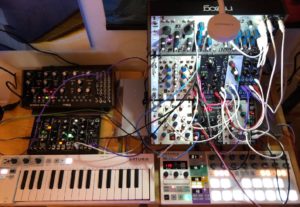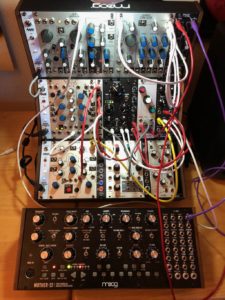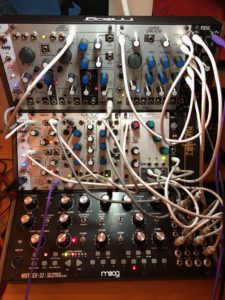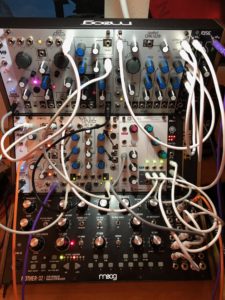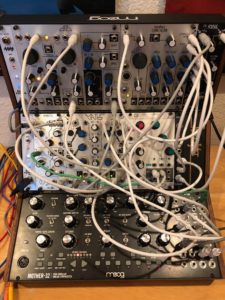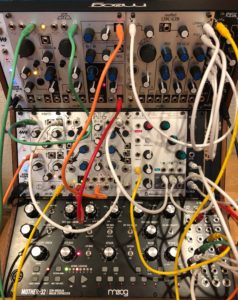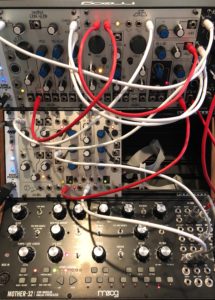These two tracks are an experiment with taking two step sequencers, running them at different step lengths (one with 5 steps and the other with 7), running the pitch CVs through a precision adder, and sending that new pitch to various oscillators. At various times I change the 5 step sequence to 3 steps, and that causes the resulting sequence to change in interesting ways.
The two sequences are driven by the Arturia Beatstep Pro, with pitch CV going through an Expert Sleepers Disting mk4 in adder mode. From there it goes through a 4MS Buff Mult to the various oscillators.
The first track uses the Moog and Erica Synths oscillators, and the drums are driven by the drum sequencer on the Beatstep.
The second track uses the Makenoise DPO for the drone, being fed through Mutable Instruments Ripples filter whose cutoff is being modulated by a Makenoise Maths. The sequenced pitch is being simultaneously routed to the Moog, the Erica wavetable VCO, and my new Makenoise 0-coast. The kick drum is from a Pico drums and is being sequenced by the Beatstep, while the laser/high-hat/thing is from the Pico drums but triggered from a Mutable Instruments Grids (which has its X axis being modified by a Maths). An Erica Synths Black Quad VCA is mixing all the non-drums, while a Makenoise Rosie mixes the drums and the output from the Quad VCA. As always, Rosie sends everything through the Erbe-verb.
“addition 1”
“addition 2”


